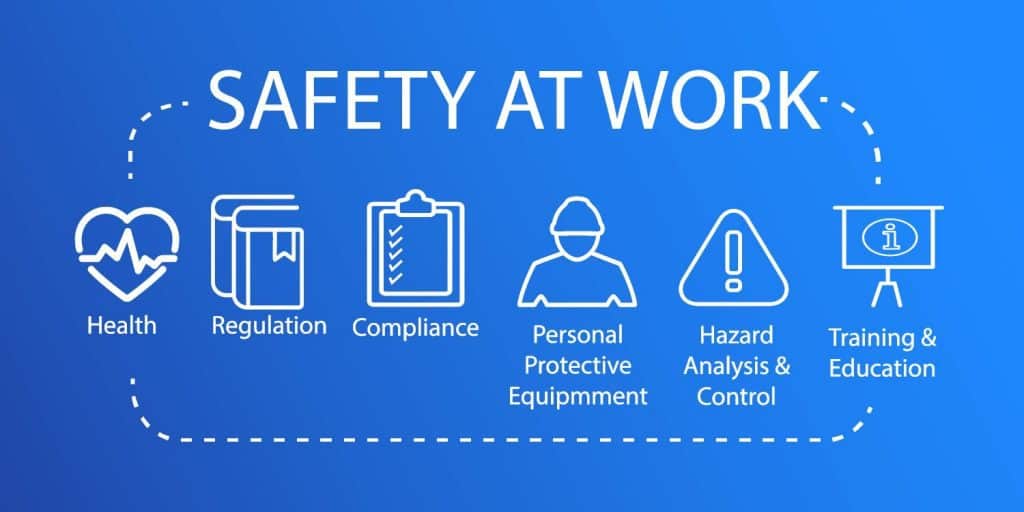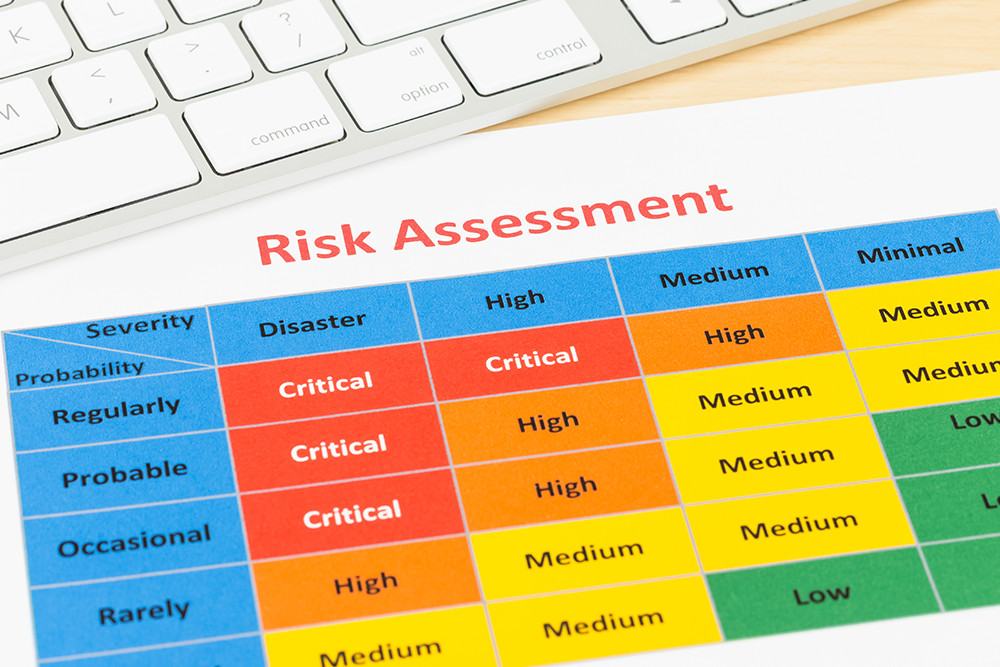
Ensuring contractors work safely can be one of the most complex responsibilities facing any organisation.
Contractors are often brought in to perform specialist, high-risk work – but unlike your own staff, they operate at arm’s length. You can’t realistically control their training, the way they work, or even the individual workers who arrive on site.
This creates multiple challenges in contractor management. Without oversight, you risk investing time and money in contractors who aren’t competent or capable of working safely. Projects can be delayed, or worse, unsafe practices can lead to serious incidents, with liability falling on you.
This blog offers practical advice to help you avoid these outcomes. It explores the challenges our actual clients face in managing contractor safety and shares proven solutions drawn from real-world practice. These solutions will help you protect your contractor workforce and ensure your supply chain consistently delivers safe work and return on investment.
Key Takeaways – Overcoming Challenges in Contractor Management
- Contractor safety lives on-site – Do not rely solely on prequalification paperwork. Use site-level tools like digital inductions, training passports, and live performance tracking to manage risk where it matters most.
- Make inductions scalable and consistent – Deliver site-specific training digitally to reduce admin, cut costs, and ensure every contractor is prepared before arrival.
- Check competency before work starts – Use real-time access to contractor training records to ensure only qualified individuals are cleared for the work they are doing.
- Record performance, not just incidents – Equip site managers with simple scoring tools to monitor behaviour, promote accountability, and build a usable record of supplier performance.
- Link safety to contract renewal – Use performance scores to motivate improvements or make the case for ending relationships with suppliers who consistently fall short.
- Feed on-site insights back into prequalification – Use real-world data to improve your contractor selection process and build a stronger, safer supply chain.
Overcoming Challenges in Contractor Management
Let’s assume you have your Stage 1 prequalification (PQQ) system in place. But even with the right paperwork on file, you’re still seeing unqualified contractors arrive on site and substandard, unsafe work taking place.
If this describes your situation, you’re not alone. Many of our clients have had to navigate similar challenges. They’ve had to develop systems to motivate and supervise safer work on site, or to identify unreliable suppliers that simply shouldn’t have contracts renewed.
The key takeaway is to treat contractor management as a continuous cycle. It must extend throughout the working relationship and feed directly into the next PQQ. The goal is to make smarter, more informed decisions every time you review your supply chain.
Contractor Management System
Streamline contractor management and see stronger returns from your supply chain. Our Contractor Management Module provides an end-to-end digital system for prequalification, safety compliance and on-site performance. Cut manual workload, reduce risks and ensure only qualified contractors work on your projects.
1. Leverage Online Inductions
If your organisation uses contractors across multiple sites, coordinating inductions can be a constant drain on time and resources. Late starters, last-minute substitutions, and workers moving between sites with specific inductions all add complexity.
Even with processes in place, you may still find yourself scrambling to find a trainer or a room at short notice.
Quality and consistency are also a concern. Human trainers vary in delivery and knowledge, and in-person inductions can be rushed, especially when they’re repeated daily or sparsely attended.
And it’s not just time being lost. Delivering inductions manually across multiple sites can be expensive. You may be paying experienced trainers to deliver sessions for only a handful of contractors, or duplicating costs for rooms, materials, and admin.
Solution: Switch to digital inductions.
By moving induction training online, you can ensure consistency of content and delivery, make inductions available ahead of time, and avoid drawing on limited internal resources.
With the Human Focus system, you can assign inductions to contractor companies or individual workers before they arrive on site. Completions are automatically tracked, showing you who has completed what and when.
And because inductions can be assigned by site, job role, or contractor company, workers who move between locations can complete the appropriate training in advance – without placing any additional burden on your site teams. And if plans change last minute, contractors can complete inductions on their smartphones, so you can minimise delays and ensure work begins on schedule.
This approach saves time, cuts costs, and gives you confidence that every contractor starts work with the necessary knowledge of your sites and processes.
Verify Competency On-Site
Even with a strong prequalification process, you can’t control who actually arrives on site or whether they’re competent to carry out the assigned work safely.
A supplier may look reliable on paper but still send underqualified or inexperienced workers. Many clients only discover this after an incident, when it becomes clear that the wrong contractors were doing the high-risk work.
After prequalification, your next major point of control is assigning tasks. To manage this effectively, your supervisors need real-time visibility of who is actually on site now and whether they’re the right person for the job.
Solution: Implement site-level competency checks.
At a minimum, your site managers need to be able to verify:
- Who has arrived
- Which tasks they’re assigned to
- Whether their training is current and suitable for the task
Human Focus clients can issue their contractors with individual digital profiles that link directly to their prequalification, training, and induction records. These “Training Passports” are accessible by scanning a unique QR code, either on the contractor’s smartphone or printed badge.
Site managers can instantly pull up training records and verify competency on the spot, preventing untrained contractors from being assigned tasks beyond their level.
Rate Contractor Performance On-Site
Even with strong inductions and real-time competency checks, you still need to know how contractors are actually performing on-site. Your site managers already know which contractors deliver – but is that knowledge being captured?
If this insight stays on site, you miss the opportunity to reinforce safe working practices and feed invaluable, real-world data into future PQQ decisions.
Solution: Record and track how your contractors are actually performing.
Your site managers are already monitoring contractor performance, but they need a consistent, low-effort way to record what they see and turn it into actionable data.
The Human Focus system provides this with simple, customisable “Rate-a-Job” forms that can be accessed on a smartphone or tablet. Line managers can pull up Rate-a-Job forms on-site as work happens, letting them score individual workers quickly and objectively. These scores are automatically aggregated into a supplier-level performance profile that separates contractors who meet your standards from those who introduce avoidable risk.
The system is designed to be used across multiple teams and sites. Over time, this structured feedback will help you:
- Identify and correct patterns in contractor behaviour
- Incentivise improvements by sharing scores with your suppliers
- Build the case for replacing contractors who consistently underperform
Make Safety a Strategic Decision
One of the biggest obstacles clients face is that many contractors do not value health and safety. For them, it’s a box to tick, not a real-world priority. Suppliers don’t provide the non-technical safety training individual contractors need to work across different sites. Those same contractors probably won’t engage with your risk management systems, either because they don’t know how or don’t respect them.
This is a cultural issue with your contractor supplier. No matter how robust your internal systems are, they cannot compensate for a supplier that does not take safety seriously.
Solution: Include safety performance data in reviews and renewals.
By this stage, you should have structured data on how contractors are performing, including specific evidence of where suppliers meet your expectations and where they fall short.
If a contractor is working safely and delivering consistent results, that’s the outcome you want. But when problems do arise, you now have actionable insights. You can share your evidence with the supplier and highlight exactly where improvements are needed. They can then provide targeted support or training to address the issues.
If they don’t act in due time – or show no interest in improvement – you have a clear and defensible basis for ending the relationship. Letting suppliers know that contract renewal is tied to their safety score creates a powerful incentive. It reinforces that safety is non-negotiable. It’s a metric of performance like any other and directly affects future work.
Feed Back Into PQQ Decisions
Your Stage 1 prequalification is a filter. In theory, it should ensure you only see competent, safe contractors working on your behalf. But the process rarely works this well. It’s generally accepted that you cannot know for sure how a contractor will perform until the work actually starts.
That’s why the most valuable insights come after onboarding. You can see how workers behave, how risks are managed, and whether the supplier lives up to their paperwork.
Solution: Close the loop – use your insights to build a better contractor list.
Throughout this blog, one theme has remained constant: good contractor management depends on learning from what happens on the ground.
This is your opportunity to close the loop. Feed these insights into your next round of prequalification. Identify the suppliers that deliver safe, competent work – and those that put your sites and projects at risk. Over time, you will build a more reliable supply chain with partners who have proven they can deliver.
If you’re a Human Focus client, our system will do this for you. It feeds contractor ratings back into the prequalification platform. You can see performance scores alongside PQQ submissions (which have been automatically tracked and routed to the relevant departments). This creates a complete, up-to-date contractor profile that brings together both paperwork and on-site performance, giving you a solid foundation for informed, strategic supply chain decisions.
A System Built to Solve Your Challenges in Contractor Management
The challenges in contractor management are well known to us because we’ve solved them for our clients.
From prequalification to on-site monitoring, we have built contractor management features into our online system that directly address the most painful and expensive parts of ensuring contractor safety and performance.
Key benefits of the Human Focus Contractor Management Module include:
- Save Time and Reduce Errors
Eliminate delays and inaccuracies with automated PQQ creation, distribution, and scoring. Custom forms and workflows capture exactly the information you need for smarter, faster decisions. - Ensure Compliance with Confidence
Automatically track insurance certificates and training records. Receive alerts before expiry and ensure compliance is always current across your contractor base. - Improve Safety and Accountability
Confirm contractors are trained and ready for work with digital Training Passports. Instantly verify qualifications and reduce the risk of unsafe or unqualified work. - Make Informed Procurement Decisions
Use performance scores captured on-site to evaluate contractor behaviour over time. Identify reliable partners and make data-driven decisions that improve safety and efficiency.
Book a free demo to see how the Human Focus system can help you take control of contractor safety and improve performance on-site.





















